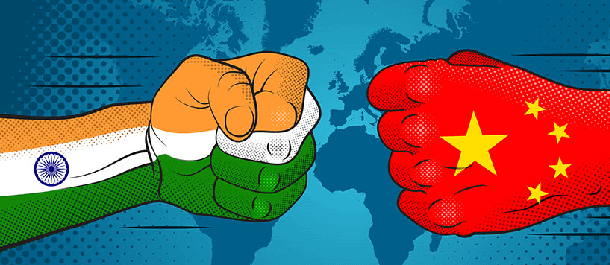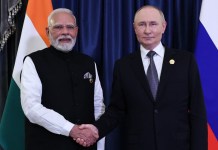The April-May ingress by the Chinese PLA into eastern Ladakh initially and to Depsang, Gogra, Hot Springs, Pangong Tso, later on, has turned out to be very costly and a strategic, diplomatic and political mistake for Beijing.
As expected, since neither the PLA nor the politico-diplomatic circles in China, at the very outset have confirmed their aggression in Galwan so the question of admitting any kind of mistakes, obviously does not arise.
But a closer analysis of the situation since the India-Chinese military impasse begun in May, clearly indicates that the Chinese have very much lost the plot a la Doklam.
In Dolkam though, unverified reports have suggested that post the withdrawal of the Indian Army, the PLA was able to replenish some of its positions for a likely future operation. In the Ladakh scenario though, the Chinese have not only lost the stratagem but it has made a mess of its diplomatic aces in the region, in the Indo-Pacific expanse, and even the South China Sea.
To begin with, the PLA started the game in May with the old Sun Zhu strategy of winning wars, without fighting it. Its salami-slicing tactics that so far has succeeded for decades against India, of securing unpatrolled or less patrolled Indian claimed lands, slowly but decisively has given rich dividends.
For many years, it has continually gained disputed yet Indian-claimed lands at the LAC while projecting its politico-diplomatic willingness to work for demarcating a mutually-acceptable border between the two countries.
From a massive disputed border of 4,056 km in the 1960s, China has gradually brought it down to a mere 2,000 km, as per its claim, while India today considers it nearly 3,400 km.
During 2010-2013, PLA reportedly made almost 600 incursions inside the Indian territory while the National Security Advisory Board under Shyam Saran had claimed that China surreptitiously had occupied more than 650 sq km of Indian territory in eastern Ladakh that the then Indian government did not officially admit.
However, this time both the Chinese government and the PLA got a rude shock. In spite of initial bungling to grasp the real Chinese intent, the time and alacrity with which the Indian forces took up positions not only around the Ladakh region but also throughout the entire stretch of borders and even around the Indian Ocean, took them by complete surprise.
But the real catch came on August 29-30 when Tibetan Commandos under the operational command of Research and Analysis Wing (RAW) – India’s external intelligence agency — occupied the southern bank of Pangong Tso, opening the defenses of strategic Moldo and Spanggur Gap of PLA. Finding itself militarily highly vulnerable, China is forced today to negotiate the mutual withdrawal of forces from multiple points, making the very logic of 7-month old PLA-initiated military impasses superfluous.
On the politico-economic front, it did hurt China badly. India’s trust deficit with China is much greater than ever before in the last 55 years. One of the bigger Chinese political objectives always has been to ensure that its competitors and perceived enemies, India and Japan do not get closer to the US militarily, allowing the superpower to enhance its military presence near Chinese land and maritime borders.

The very opposite happened. India and Japan have enhanced military ties with the US while Australia, somehow reluctant earlier, has become a partner in the QUAD-Malabar naval exercise that China is very uncomfortable about.
The supposedly Asian NATO in the form of QUAD materializes or not, the Chinese miscalculations and over-ambitious plans have brought at least three militarily powerful countries in the region closer together and with the US.
In the south China Sea where China has maritime disputes with almost all nations, the Philippines and Vietnam have enhanced strategic-military relations with India. And the biggest strategic blunder could well be that belligerent Chinese actions have brought the US openly in defense of Taiwan, prompting Pompeo to declare that Taiwan has not been a part of China, signaling that in near future this could well become an official policy of the US and many other countries. The very essence of the ‘One China’ policy, is going to be questioned more openly now.
Economically too, all major infrastructure Indian contracts in railways, highways and telecommunications have been explicitly reworked to bar the entry of Chinese companies, making them lose many millions of dollars.
The fate of Huawei in the 5G domain, remains uncertain and if India eventually too, removes it from prospective bidders, it will be a huge financial and political setback and loss of face for China.
Similarly, the more than 100-odd Chinese apps thrown out from India, have been a big commercial loss. But the biggest of course, has been ByteDance’s TikTok whose removal from the country, analysts estimate, could in due course lead to a loss of nearly $5 billion. And to make matters worse, the US too is almost strangulating the company to make it available to American companies or close shop.
At the end of its Ladakh misadventure then the Chinese are almost back to square one. It will have to go back and leave most of the Indian-claimed territories in eastern Ladakh. It has not been able to show a short and swift military victory against India, Taiwan or any of the smaller nations in the South China sea to its people in China or the CPC.
Its hyperbolic propaganda apart, PLA’s real combat capabilities remain out in question. So an objective analysis is certain to bring out the many drawbacks that the Chinese PLA is engulfed with including its vulnerable military strategy. And it will have a bearing on the shaping of Indian, Japanese, Taiwanese and most importantly the US security strategies against China in the short to medium-term.




